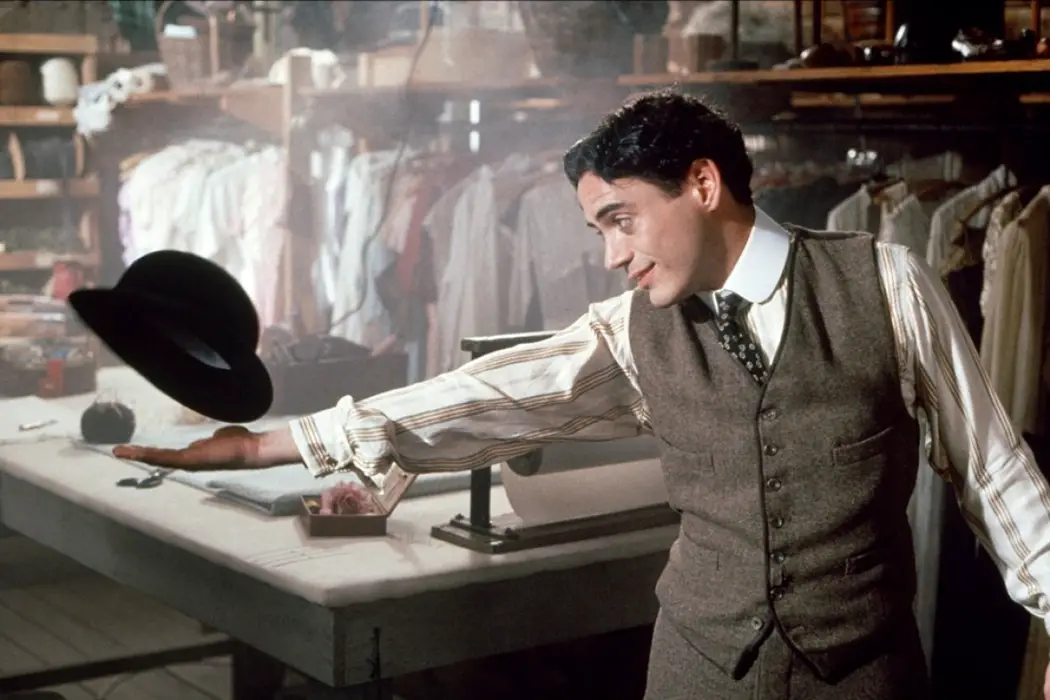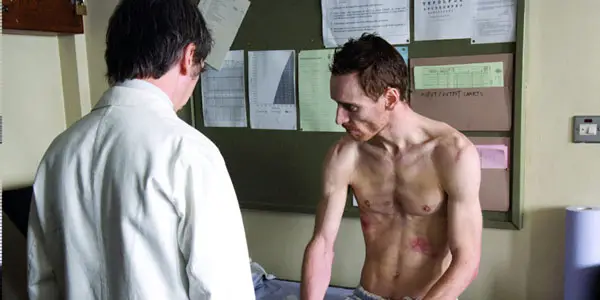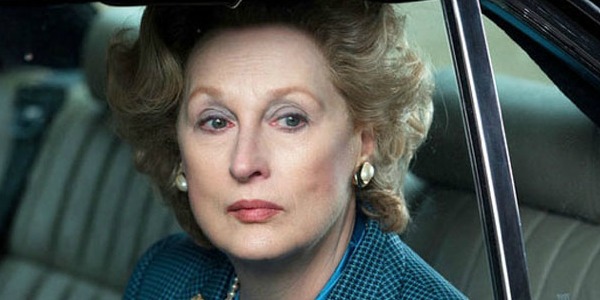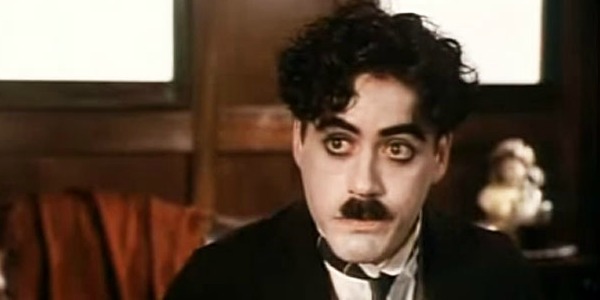Acting In A Biographical Film: Playing The Real Part

Michelle Sabato is an actor and writer from Cleveland, Ohio.…
Sanford Meisner, a well renowned acting teacher, once remarked that “acting is behaving truthfully under imaginary circumstances”. I think we can all agree that his quote is what actors strive to create and what audiences hope to see. But what happens when the material is a real life circumstance and the “character” was a historical figure?
Biographies and historical depictions have long been a fascination to me from an acting perspective. As an actor, it’s always imperative to live in your character’s shoes, and with biographies you often have a wealth of material at your fingertips. But you are also dealing with playing someone that people know and identify with; the mystery of creating your character is no longer your own. The look, speech and movement of the character you are playing has already been documented and now has to be replicated. How might this help or hinder the actor playing the part? Here are some of my favorite performances of historical figures and an in depth look of how the actors got into character.
Michael Fassbender in Hunger (2008)

Bobby Sands, a member of the IRA, lead a hunger strike in the Long Kesh prison to protest the removal of their special category status. The special category status allowed prisoners to be labelled as prisoners of war, as England was, and is, an occupying force in Northern Ireland. Sadly, Bobby Sands lost his life while on hunger strike along with nine other prisoners.
In 2008, director Steve McQueen released his first feature length film, Hunger, based on the hunger strike lead by Sands. McQueen, who is British, remarked that the story had stuck with him since he was a child when he saw Sands on the news. He described seeing this news unfold as a “coming of age” experience; one that made him first start to question passion, duty, and purpose. To play the character of Bobby Sands, McQueen cast the Irish-German actor, Michael Fassbender. Fassbender had worked in television and film, starring in Band of Brothers and 300, but Hunger would launch his career as a Hollywood heavyweight.
Growing up in Ireland, Fassbender was well aware of the part he was taking on and he even said he was quite nervous to get the role, because Bobby Sands was such an important person in Irish culture. Fassbender grew up far away from the troubles in Belfast, but his mother had family in the north and they would often visit the checkpoint protected town. To really immerse himself in the northern culture, Fassbender rented an apartment in Belfast and repeatedly read Sands’ writings. He chose not to meet with the Sands family because the incident still felt too raw to Fassbender. Because Bobby Sands was on a hunger strike, Fassbender had to go on a ten week medically monitored crash diet. By the end of the film, Fassbender is skeletal and his appearance is jaw-dropping.
The film itself is not heavy on dialogue. There is one pivotal scene between Sands and his priest, played by Liam Cunningham, that is an almost twenty minute long shot. In this scene, Sands declares that he is going on a hunger strike while his priest begs him to reconsider. The rest of the film is predominately action sequences that show what life was like in the Long Kesh prison and shows how Sands begins to wither away. While this is a very difficult film to watch, it is by far one of the most important films to be released in the past ten years, in my opinion.
Meryl Streep in The Iron Lady (2011)

Oddly enough, this film overlaps with the previous film, Hunger. Margaret Thatcher was the one to revoke special category status to the prisoners in Northern Ireland. Her famous quote “a crime, is a crime, is a crime” about the northern troubles is mentioned in the film The Iron Lady. The film details the life of England’s Prime Minister, Margaret Thatcher, from her childhood, through her political life and into her retired age. What makes this film unique to me is the format in which it follows. We see Thatcher as an elderly woman, mourning the loss of her husband. She is having conversations with his ghost and going through the details of their life and her political career. The two in conversation act as narrators of the story through Thatcher’s trials and tribulations.
Meryl Streep was given the task and treasure of playing the first female political leader in the Western world. To prepare, Streep watched debates and interviews of Thatcher in order to mimic her movements and voice pattern. Because Streep has a musical background, she took her approach to Thatcher’s voice in a similar way as learning a song. While Streep was alive during Thatcher’s term, her politics did not fall in line with the character she was playing. Streep had to look past the Thatcher she thought she new from the news and really dive deep into reading about her life.
Thatcher was a controversial politician for many reasons, one of which being because she was a woman. Streep stated that she was interested in playing her because of that reason: she wanted to delve into the reasons why she was praised and villainized. Streep took specific notes from Neil Kinnock, the former leader of the Labour Party, who often fought against Thatcher. She wanted to hear what his perception of Thatcher was, as he worked closely with her for seven years in Parliament.
The focus of the film was more of a subjective view of what the downside of power entails. While Streep was the only actor on this list to portray a character who was still alive when then filming took place, she did not have a chance to meet with her in person. Streep did, however, donate her paycheck from the film to the Women’s History Museum in Washington, DC.
Robert Downey Jr in Chaplin (1992)

The very first film that I can remember having a life-changing impact on me was Chaplin. I was eight years old when I saw the film and I turned to my grandfather and said “That, I want to do that”. As a lover of black and white films, the real Chaplin was a large part of my movie-viewing experiences as a young child. But I also loved modern day films, so to have Robert Downey Jr. play Chaplin was like a match made in heaven for me.
The film is based off of the autobiography written by David Robinson. Robinson had the great fortune of interviewing Chaplin about the autobiography that he was going to write, as shown in sequences in the film between Downey and Anthony Hopkins, playing Robinson. Scenes of this interview process are dispersed between the recounting of Chaplin’s life; spanning from his childhood in England, his rising fame in Hollywood and finishes with him returning to America to accept his honorary Academy Award.
To get into character Downey had one of the best advantages: seeing all of Chaplin’s movies. In his interview for Inside the Actor’s Studio, Downey said that he saw every single one of Chaplin’s films and watched them repeatedly. He also learned how to play violin, play tennis left handed and do intermediate ballet moves; all things that Chaplin did. Downey also had a voice coach to perfect his English accent. Geraldine Chaplin, Charlie Chaplin’s daughter, plays her grandmother in the film. Geraldine remarked in a later interview that seeing Downey in full costume for the first time left her literally speechless.
Chaplin is one of the most iconic film actors of all time and Downey, in my opinion, did the job justice. There are many moments in this film where Downey perfectly mimics Chaplin’s movements in a very eerie way. For instance, in the scene in which Downey is recreating the famous monologue from The Great Dictator, you can hold up the recreation and the original side by side and both actors’ hand movements are in tandem.
Daniel Day-Lewis in Lincoln (2012)

While Downey had the benefit of hours upon hours of footage, Daniel Day Lewis had to use more of his imagination to bring Lincoln to life. The film focuses on the life of Abraham Lincoln during the time of passing the thirteenth amendment. Director, Steven Spielberg, had been working on developing the film for nine years and had Lewis in mind the entire time. Lewis had declined the role twice but ultimately accepted it after reading the final script that was written by legendary playwright and screen writer, Tony Kushner.
After accepting the role, Lewis asked that he have a full year to research the role. To start his journey, Lewis read over one hundred books on Lincoln. He took an objective approach to the material at first, just learning things about his life and the climate in the United States during Lincoln’s life. Lewis then switched to a subjective approach when he began reading Lincoln’s actual speeches and written materials. He took Lincoln’s written word as a map of movement through his thoughts.
To get the physicality and sound of Lincoln, Lewis had to rely heavily on the written accounts of others who had been in the presence of Lincoln. There were numerous accounts of Lincoln’s voice being of a higher pitch, so Lewis recorded himself speaking and sent it to Spielberg. Lewis studied pictures taken of Lincoln to see the way he sat and carried himself. Because there was no recorded video of Lincoln, Lewis had to imagine the way Lincoln would walk. But, he had a similarity with Lincoln in regards to their tall stature. When visiting his office and home in Illinois, Lewis ducked in the same manor Lincoln did to the low ceilings.
I will never forget being in the movie theatre watching this film. There was an audible gasp once Lewis was revealed on screen. Keep in mind, no one watching this film has actually seen Lincoln in real life, but Lewis was able to capture the essence of Lincoln that we have all learned about. For his performance, Lewis garnered his third Academy Award, and his performance is lauded as one of the best biographical depictions of all time.
Technique Change
So, what are the advantages to portraying a real life person? Like the examples that I have given above, there is a wealth of knowledge on each of these people. The character development is pretty much compiled for the actors to consume. Aside from books and written materials, there are a lot of video footage and voice recordings that the actors could use in order to replicate.
But, with all of that information readily available, does it makes the actor’s job any easier? In my opinion, no, it does not. With portraying such notable figures, it puts that much more pressure on the actor to perform with precision accuracy. There is also a fine line between portraying a person and impersonating a person. Impersonating a person can make a the character into a caricature, which is exactly what the actor should not want to do.
In regards to mental preparation for a role like this, it almost becomes more difficult because there are certain confines that you have to work within; and those confines are an actual person’s existence. What I mean is this: when creating a fictional character, the actor has the gift of using their imagination to compile a backstory. When working on a biographical character, the actor has to use the knowledge that they’ve gained in their research as a template for their backstory. It might not be something relatable to the actor themselves, but it’s integral to the character they are portraying, and therefore it has to be integral to their preparation. Either way, the actor is working within an imaginary circumstance to them, thus making the Sanford Meisner quote from above accurate.
Acting In A Biographical Film: Conclusion
Portraying a person who actually existed is no easy task. There is a ton of work that goes into stepping into someone else’s shoes. Whether it’s voice and movement or re-framing old ideologies, there is a lot of preparation and practice involved. Biographical depictions can help bring us back in time and allow us to see prominent figures in a new light.
What are some of your favorite depictions in film? Do you think the job of portraying a real life person would be easier or harder to do?
Does content like this matter to you?
Become a Member and support film journalism. Unlock access to all of Film Inquiry`s great articles. Join a community of like-minded readers who are passionate about cinema - get access to our private members Network, give back to independent filmmakers, and more.
Michelle Sabato is an actor and writer from Cleveland, Ohio. By the age of 2 Michelle had memorized all the words to The Wizard of Oz. So, yes, she can carry a conversation with just using movie quotes.













